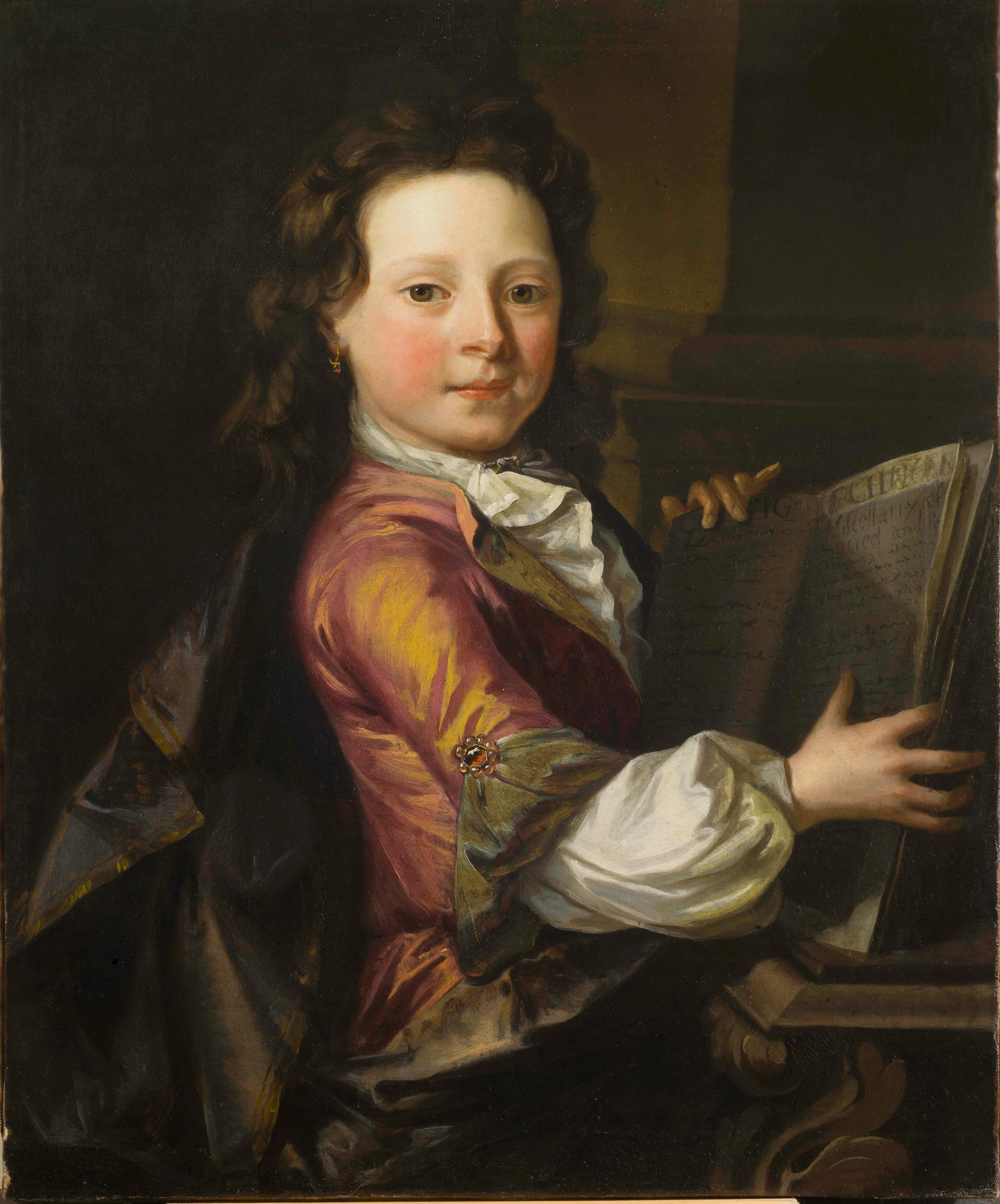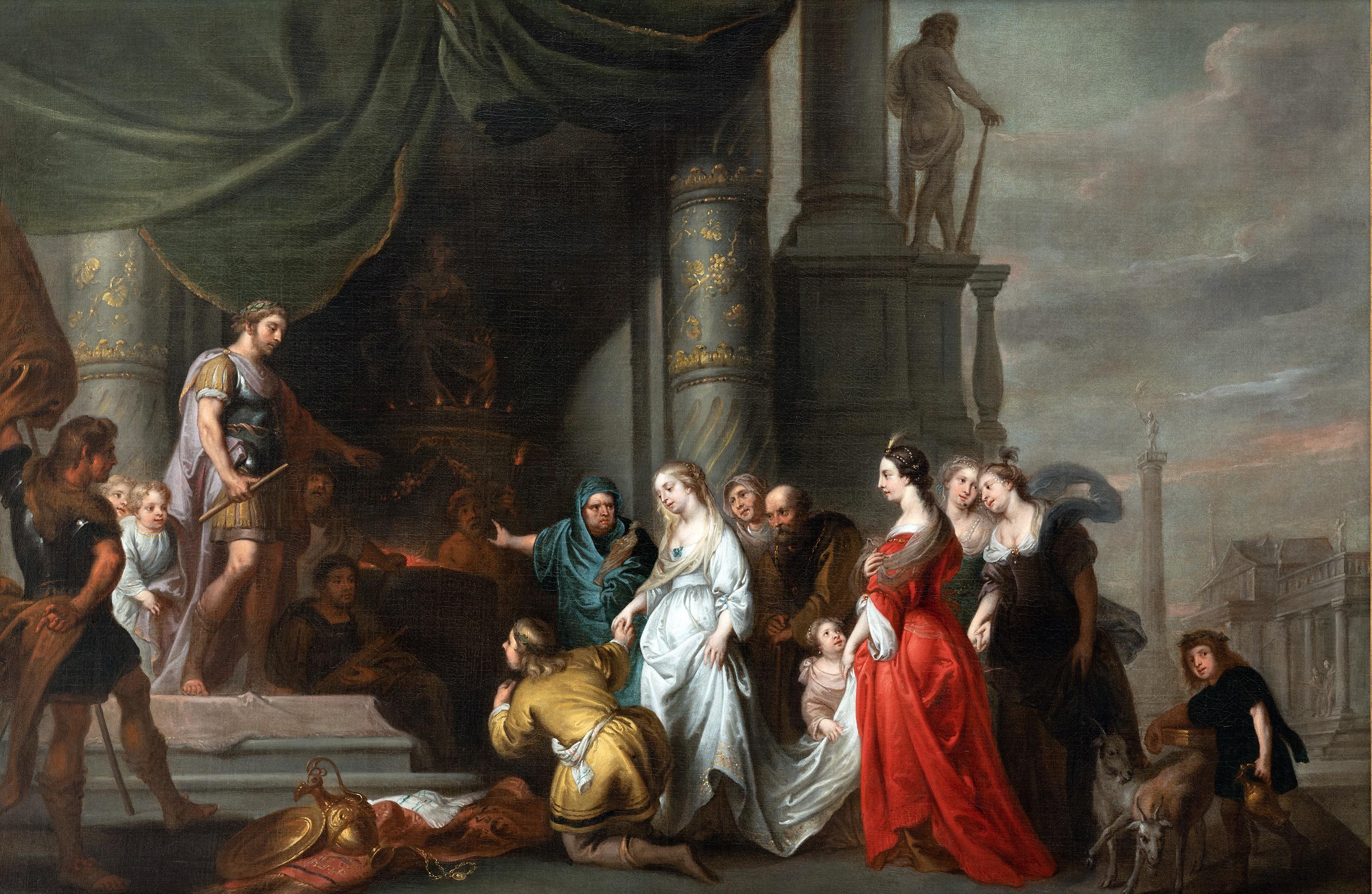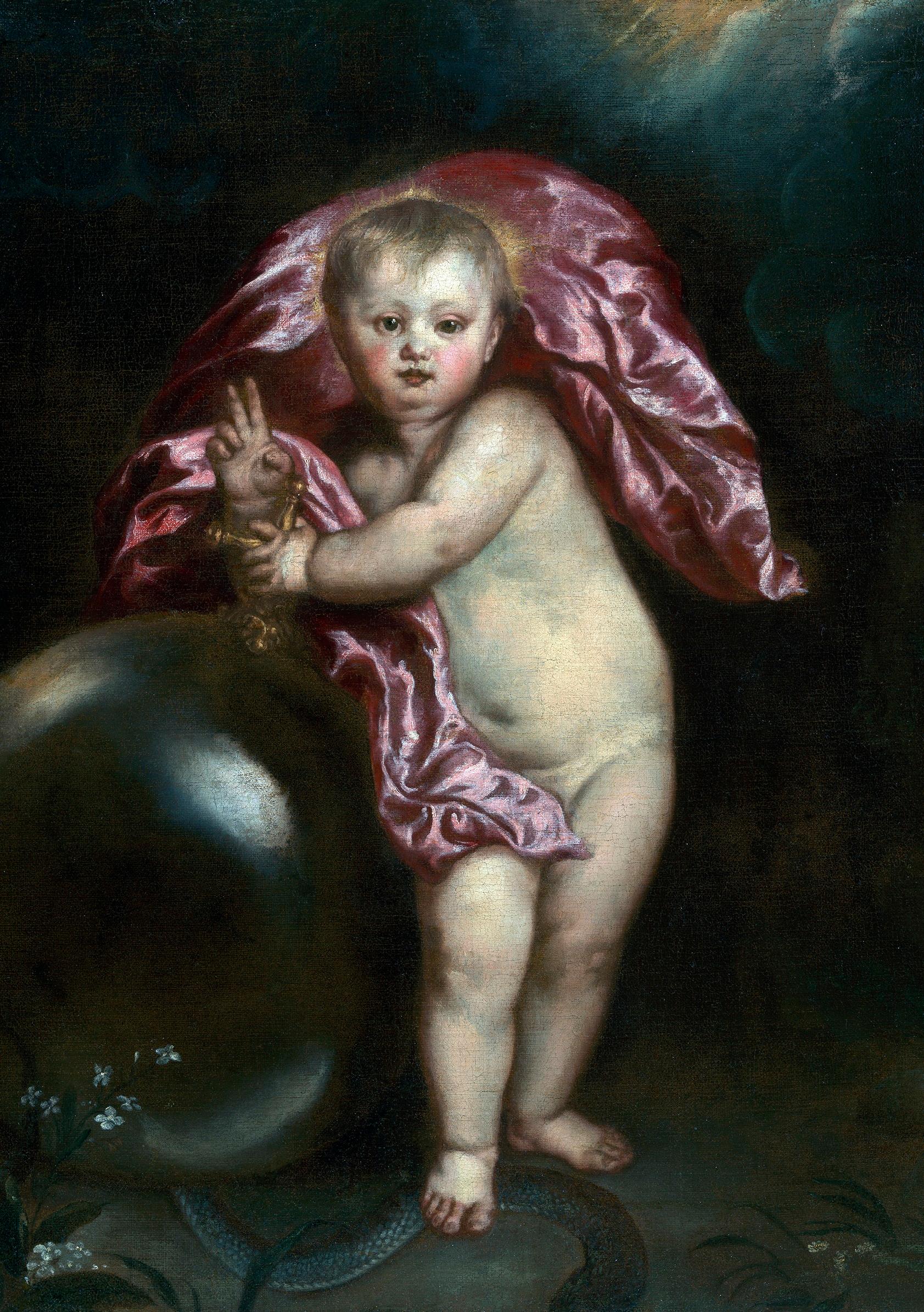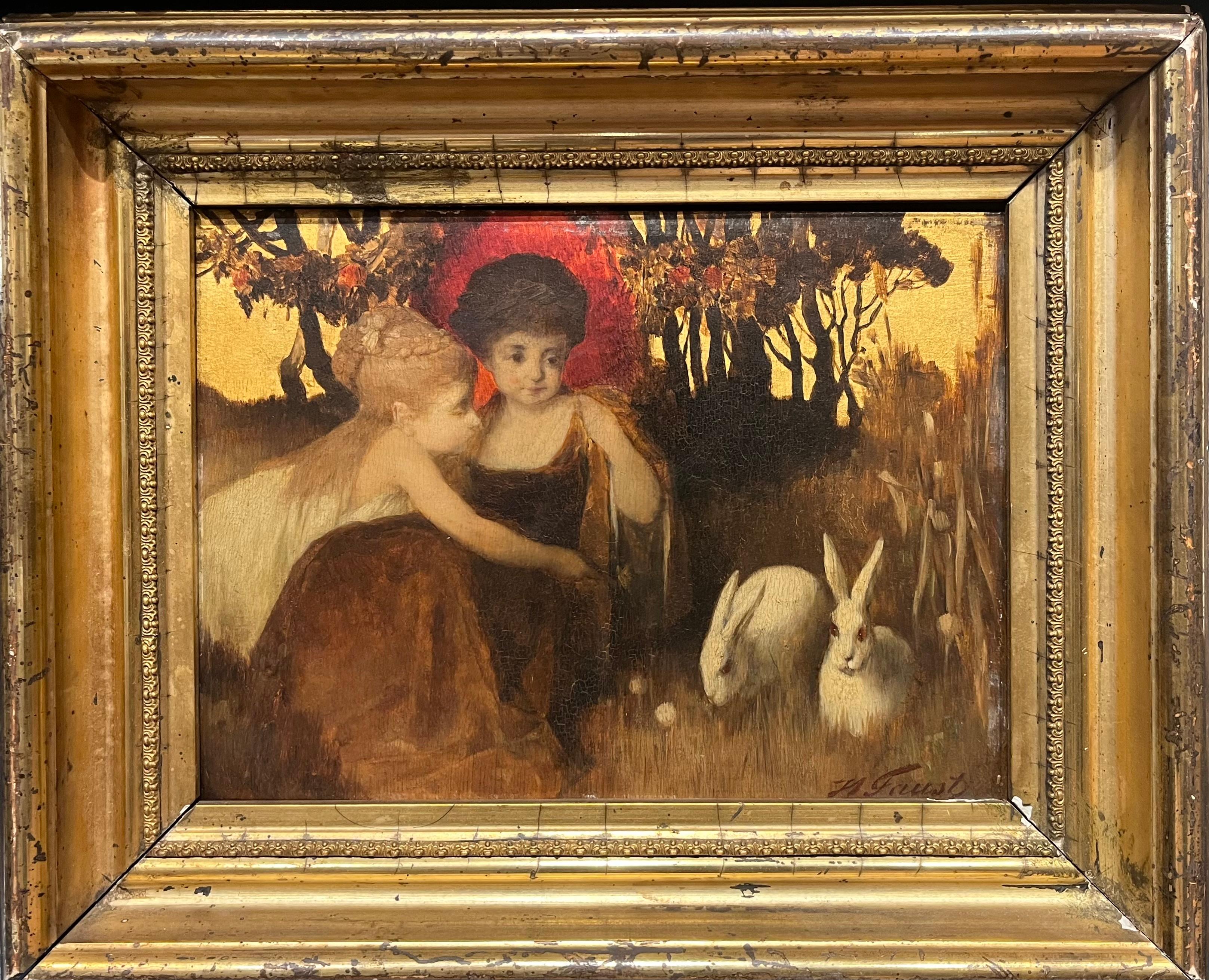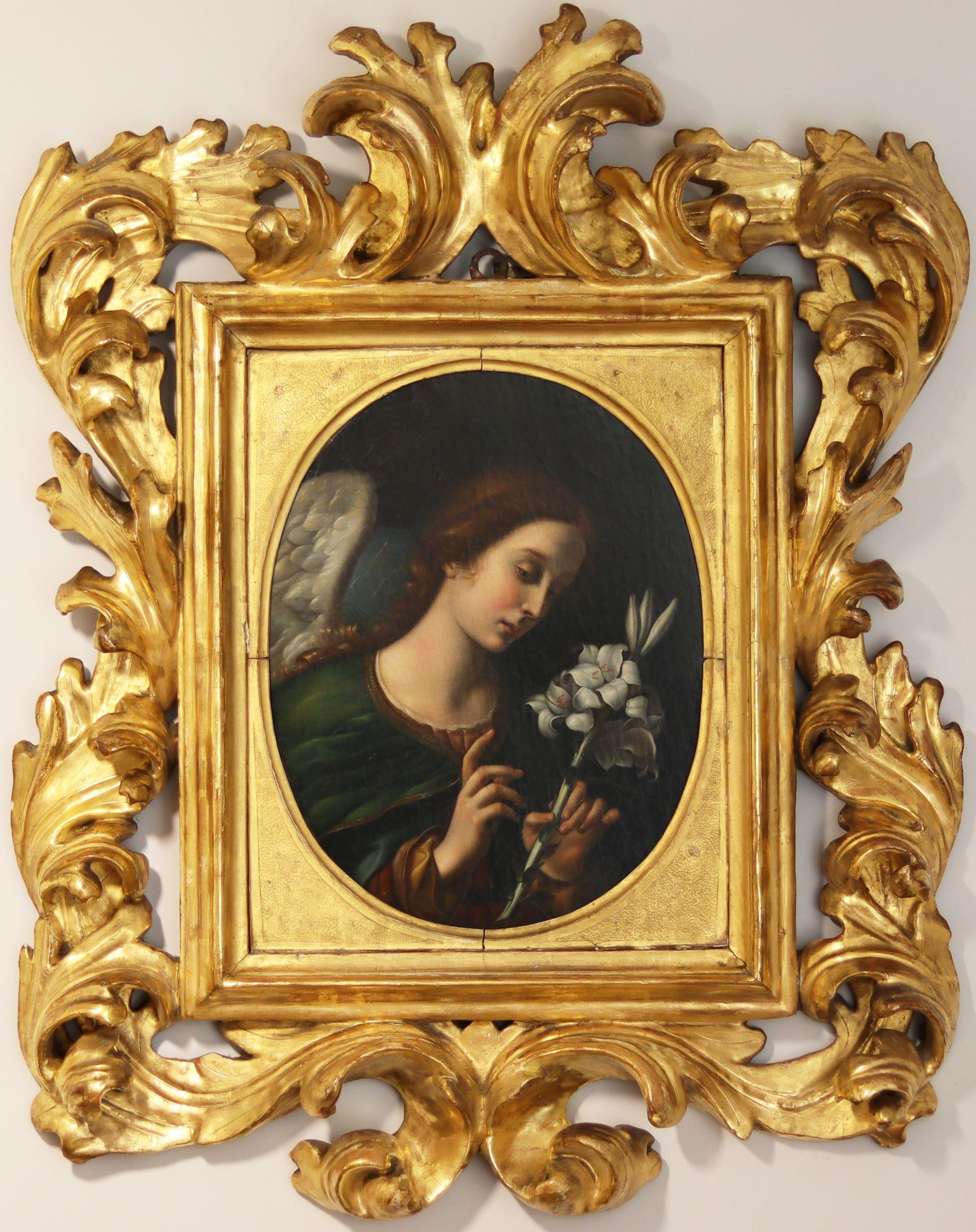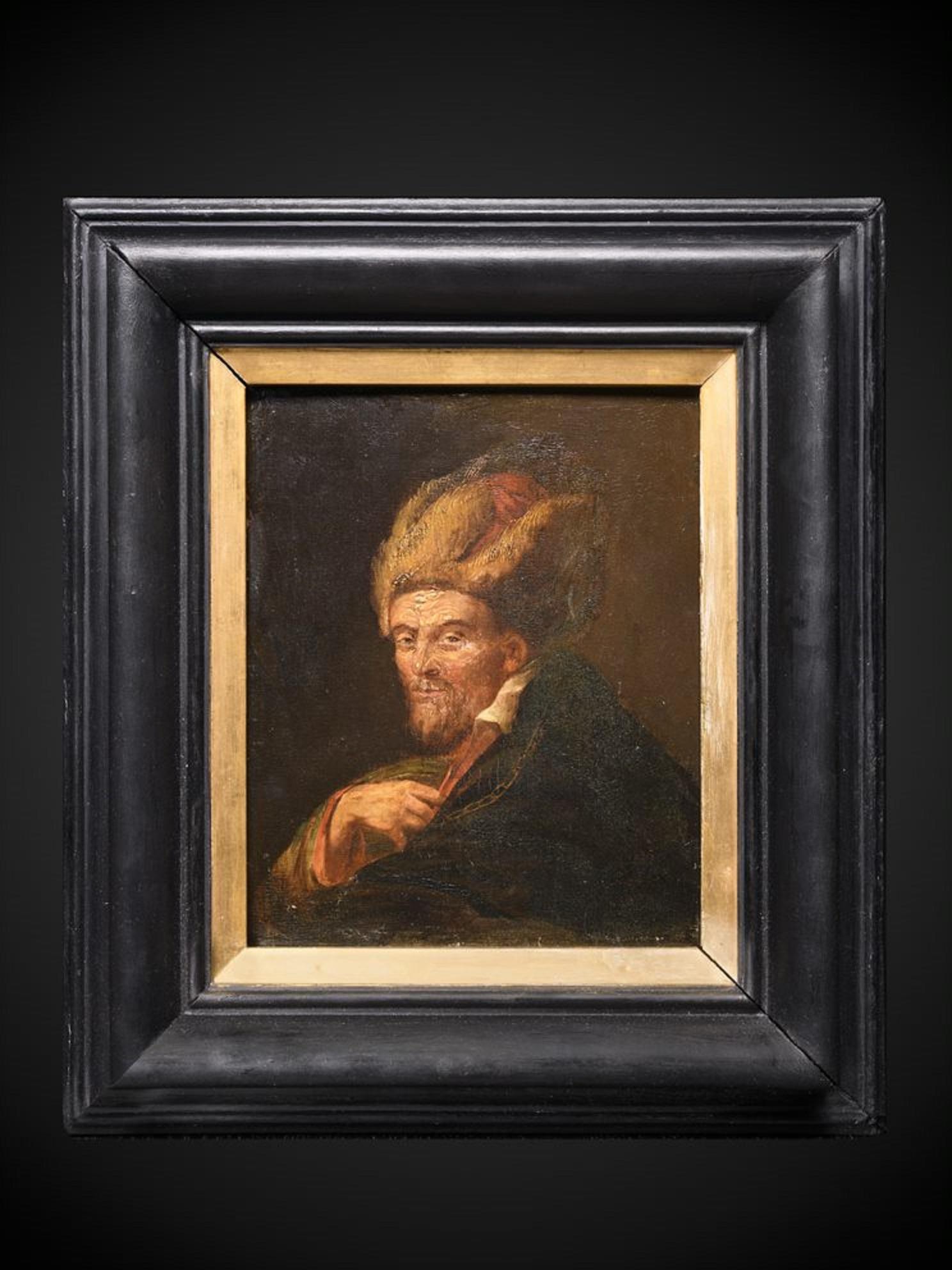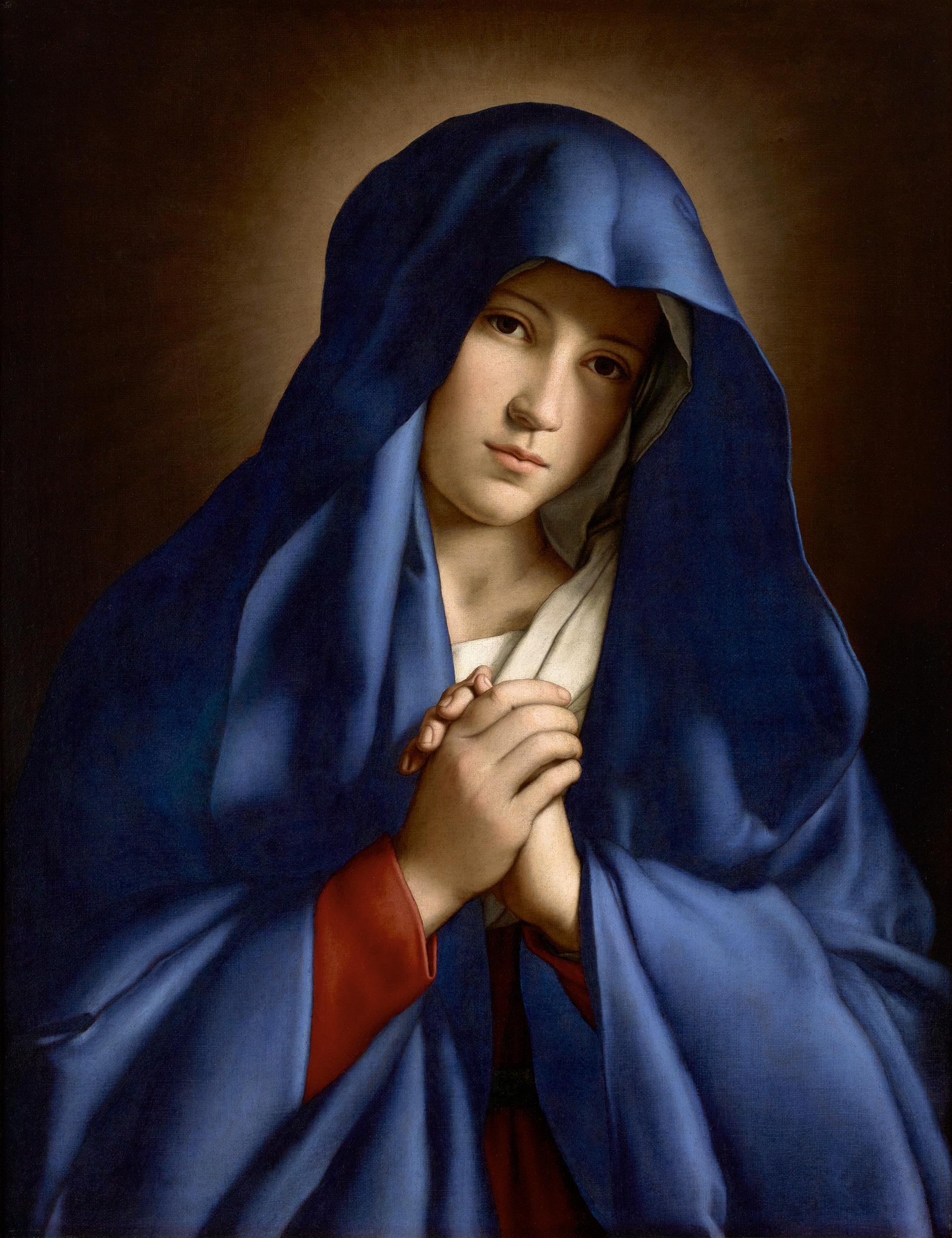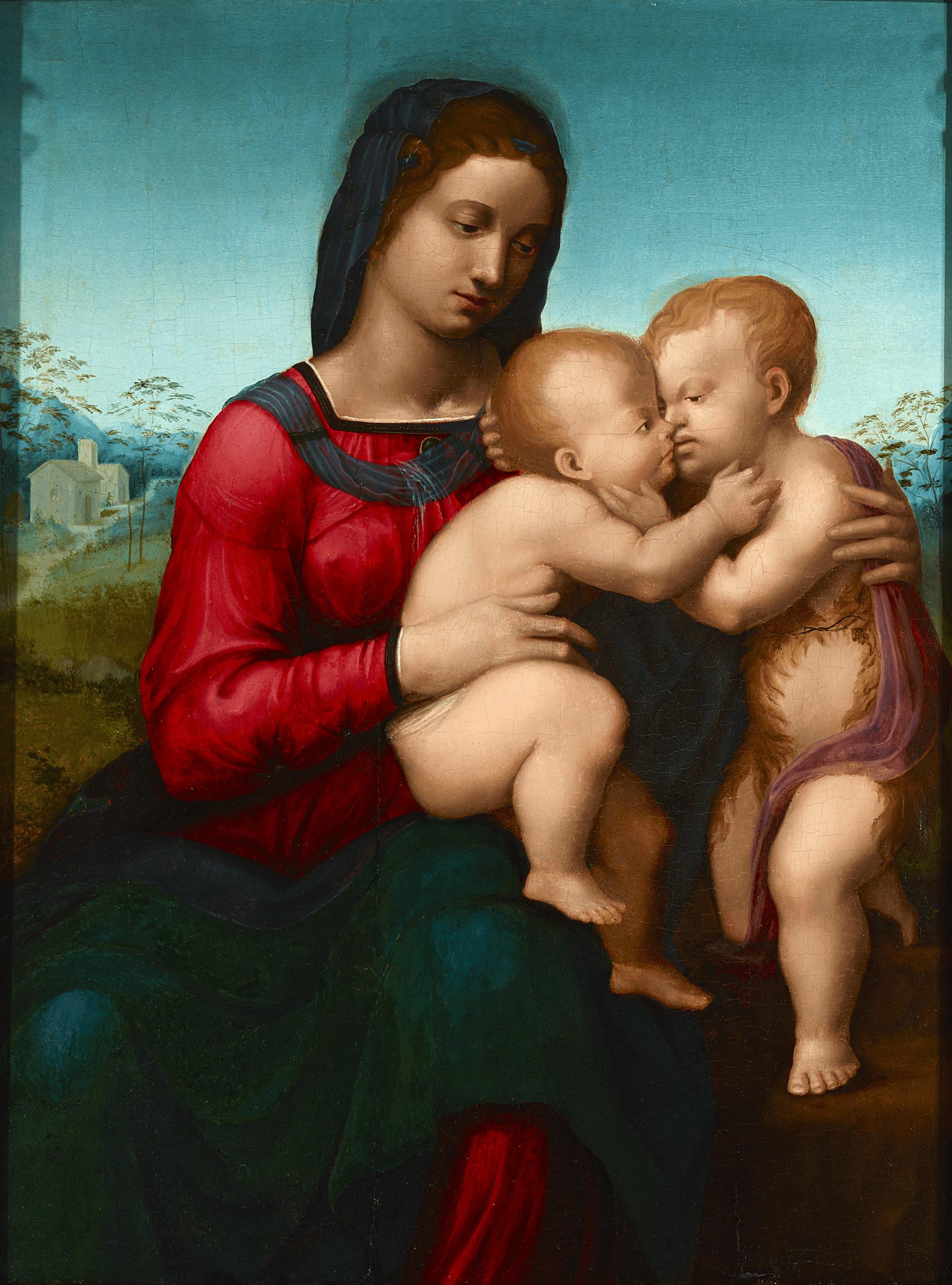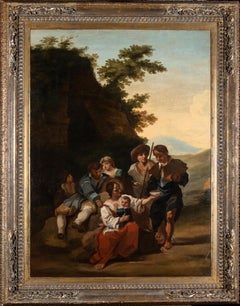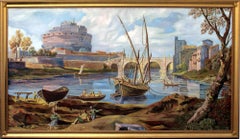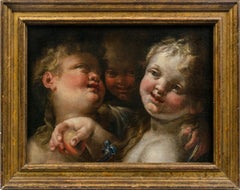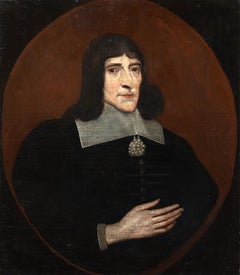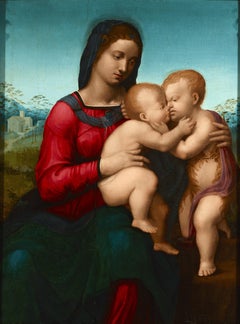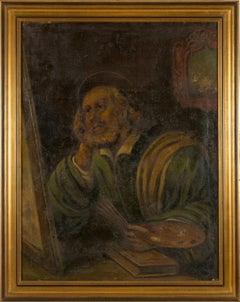
Portrait of Saint Luke the Evangelist after Guercino Central Italy 18th Century
View Similar Items
Want more images or videos?
Request additional images or videos from the seller
1 of 12
Portrait of Saint Luke the Evangelist after Guercino Central Italy 18th Century1700-1800
1700-1800
About the Item
- Creation Year:1700-1800
- Dimensions:Height: 38.59 in (98 cm)Width: 29.14 in (74 cm)Depth: 1.58 in (4 cm)
- Medium:
- Movement & Style:
- Period:
- Condition:
- Gallery Location:Roma, IT
- Reference Number:1stDibs: LU135015965852
About the Seller
4.9
Gold Seller
These expertly vetted sellers are highly rated and consistently exceed customer expectations.
Established in 1998
1stDibs seller since 2020
85 sales on 1stDibs
More From This SellerView All
- Italian Landscape Oil Painting Baroque Bamboccianti 18th Century Paolo MonaldiLocated in Roma, ITThepainting accompanied by an expertise drawn up by prof Ferdinando Arisi that wrote: This pilgrims' stop is a typical work of Paolo Monaldi active in Rome be...Category
1760s Baroque Landscape Paintings
MaterialsOil
- Large Landscape Oil Painting Of Rome With Castel Sant'Angelo and Tiber RiverLocated in Roma, ITThe painting is typical genre scene of Rome of the 17th century, a daily life along the Tiber river. with the river Tiber, Castel Sant'Angelo. Fishermen and characters are on the bank of the river, while several boats travel along it. In the background, perfectly portrayed with a clever play of perspective, Castel Sant'Angelo appears in all its splendor. The work refers to the tradition of Roman painters of the 18th century and in particular is inspired by and takes up the style of Giovanni Battista Busiri a famous and important roman painter of vedute and landscape active in Rome in the 18th century. One of his famous and important artwork a watercolor painting view of the Castel Sant' Angelo, sold at Sothebys previously property of the Dukes of Newcastle under Lyne, and was exposed at Clumber Park...Category
20th Century Other Art Style Landscape Paintings
MaterialsOil
$1,818 Sale Price75% Off - 19th Century Landscape Oil Painting Grand Tour Style View Of The Arch Of TrajanLocated in Roma, ITElaborately framed, isolated in black modern frame this painting represent a typically piece of grand tour of the 19th century and show the arch of Trajan is an ancient and very important Roman triumphal arch erected outside the city of Rome in the southern of Italy in Benevento. Erected in honour of the Emperor Trajan across the Via Appia, at the point where it enters the city and incorporated into the southern sector of the city walls and became known as Porta Aurea ("Golden Gate"). The arch was studied by Sebastiano Serlio in Renaissance times and drawn by Giovanni Battista Piranesi in the 18th century. It was restored several times due to aging and earthquakes: under Pope Urban VIII, then in 1661, 1713 (after the marble architrave crumbled) and 1792. In 1850, on the occasion of Pope Pius IX...Category
19th Century Landscape Paintings
MaterialsOil
- Italian Landscape Oil Paint on Board View of Arch of Constantine and Meta SudansLocated in Roma, ITan interesting view oil on board view of the arch of Constantine, portrayed from the Via Sacra with the ruins of the Meta Sudans, an ancient roman fountain...Category
19th Century Other Art Style Landscape Paintings
MaterialsOil
- Landscape Grand Tour Oil Painting View Of Piazza del Popolo in Rome 19th CenturyLocated in Roma, ITElaborately framed, isolated in black modern frames this painting represent a typically daily scene of Rome at the end of the 19th century in a perfect grand tour style present a vi...Category
19th Century Other Art Style Landscape Paintings
MaterialsOil
- Landscape Oil Painting View of Castel Sant'Angelo From Tiber River Italian 20thLocated in Roma, ITThe painting is typical genre scene of Rome of the 17th century, a daily life along the Tiber river. with the river Tiber, Castel Sant'Angelo. Fishermen and characters are on the b...Category
20th Century Other Art Style Landscape Paintings
MaterialsOil
You May Also Like
- Three AngelsBy Domenico Piola the ElderLocated in New York, NYProvenance: Robert L. and Bertina Suida Manning, New York, until 1996 Private Collection, USA One of the leading artists in Genoa during the second half of the seventeenth century, Domenico Piola came from a successful family of artists, renowned for their many illusionistic ceiling programs throughout Genoese churches and palaces. A prolific draughtsman and painter, Domenico oversaw an extremely productive studio. In addition to his collaborations with numerous other artists, Domenico also provided many designs for book illustrations and prints that circulated throughout Europe, earning him international exposure and high acclaim in his own day. As Dr. Anna Orlando has indicated (written communication), the present work is an early work by Piola, datable from the late 1640s. At this time the young artist came strongly under the influence of Castiglione and Valerio Castello, while admiring the works of Giulio Cesare Procaccini. Piola’s works from this period are exuberant and fluid, and the artist’s love of portraying children is evident from the angels and putti that populate both his altarpieces and more intimate paintings. The present work depicts three angels...Category
17th Century Baroque Figurative Paintings
MaterialsOil, Canvas
- 17th century English figure painting - Portrait nobleman - Oil on canvasLocated in Varmo, ITEnglish painter (17th century) - Portrait of a gentleman. 73.5 x 63.5cm. Oil on canvas, unframed. Condition report: Canvas applied on panel. Good state of conservation of the pict...Category
Mid-17th Century Baroque Portrait Paintings
MaterialsCanvas, Oil
$1,977 Sale Price28% OffFree Shipping - Virgin and Child with the Infant Saint JohnBy Domenico PuligoLocated in New Orleans, LAA masterful example of Italian Mannerist painting, this exceptional panel was composed by the renowned Florentine painter Domenico Puligo. Alongside Jacopo Pontormo and Rosso Fiorentino, Puligo is remembered as one of the foremost figures of the Mannerist movement that rose to prominence during the 16th century in Florence. This panel of the Virgin Mary with the Christ child and Saint John the Baptist is a characteristic example of his celebrated devotional images, which grace museums such as the Metropolitan Museum of Art (New York), Museo del Prado (Madrid), Palazzo Borghese (Rome), and Palazzo Pitti (Florence), among many others. Puligo’s skill with color is fully demonstrated in the beautifully preserved work. Considering its age, the vibrancy and the sheer range of color is remarkable. The Virgin Mary’s crimson dress...Category
16th Century Mannerist Portrait Paintings
MaterialsOil, Panel
- Attributed to Carlo Ceresa Portrait of a Gentleman 17 century oil canvasBy Carlo CeresaLocated in Florence, ITThe painting represents the portrait of a young gentleman from the late XVII century, stylishly and modish dressed. The figure is shown perfectly placed in space; the volume of the figure is depicted with great competence, so the body appears realistic and tangible. The Gentleman exhibits an extremely distinguished behavior, and reveals strength and energy together with a genuine liveliness that comes close to cordiality by showing a hint of a smile. This young man was undoubtedly a member of an aristocratic and rich family and he’s portrayed in the arcade of his city palace or maybe in his country villa. The artist who painted the Gentleman was a skilful and appreciated artist, sought-after by aristocratic and rich customers, which is demonstrated also by the refined pose of the portrayed and the attention to the details of his dress. One very fascinating peculiarity is in his costume indeed, distinguished by originality from the majority of that time’s dresses, which were almost always black or at least dark, according to the fashion which prevailed at that time in the Italian Region Lombardy. The painting is attributed to Carlo Ceresa, who was born and worked in that Region. The artist was also famous and appreciated for the meticulous attention to details of the cloth and the faithful and realistic rendition of the features, elements that we find in the Gentleman indeed. The young man wears a military costume, a short layered coat, made of leather or suede; this garment was used under the armor or alone because it was resistant enough to assimilate the strokes of the sword and it was long enough to protect the thighs up to the rim of the boot. Another Gentleman still unknown at the Stibbert Museum (Florence) shows a very similar garment and is dated by the scholars 1660 circa. The sober costume of the Gentleman was enriched by elegant details, such as the Venetian laces, the precious fabric and a hat with many soft feathers, very fashionable at that time and an element of distinction for their value, skillfully represented by the artist in the decorations and in the weave. The Gentleman gracefully holds a walking stick in his right hand; the hat indeed is carried in a charming way; all these signals increase the aristocratic posture of the figure. Besides, remarkable and inventive was the taste of the artiste in creating the harmony between the combination of the two predominant colors white and yellow, perfectly bound together with the dark color of the hat, the background and his hair, emphasizing, while accurately framing it, the face of the Gentleman. Furthermore, very meticulous is the face shading, the hue of the colors in order to render realistic the ruddiness, and the white touches are competently given on the nose and the lips in order to recreate the original brilliance. COMPARISONS BETWEEN THE GENTLEMAN AND CARLO CERESA’S ARTWORKS The Gentleman shows many style comparisons with a number of portraits...Category
Late 17th Century Baroque Portrait Paintings
MaterialsCanvas, Oil
- 17th Century Italian Old Master Fine Portrait of St. NicholasLocated in Cirencester, GloucestershireSt. Nicholas of Tolentino (1245-1305) Italian School, 17th century oil painting on canvas, canvas: 10 x 8 inches provenance: private collection, Germany Very fine and rare 17th century Italian Old...Category
17th Century Baroque Figurative Paintings
MaterialsOil
$4,479 Sale Price50% Off - Striped Cap, Portrait, Figurative, Baroque, Female, Oil, Painting, TimelessBy Ray DonleyLocated in Riverdale, NYStriped Cap is a baroque inspired portrait, oil on linen, by Ray Donley. It is 24x24. It is a timeless figurative painting featuring a female figure. For Ray Donley, the classic...Category
Early 2000s Baroque Figurative Paintings
MaterialsOil, Linen
Recently Viewed
View AllMore Ways To Browse
Oil Portrait Jesus
Italian Religious Icon
Child 18th Century Painting Portrait
Oil Portrait 1700
Miniature Portrait Of A Lady
Christian Religious Oil Paintings
Antique Greek Icon Icons
Olive Thomas
Flanders 18th
St Jerome
Saint Luke
Olive Gatherer
Lady Giovanni
Olive Tree Drawings
Greek Religious Icons
Portrait Miniature Child
Greek Olive Oil
Constantinople Painting
